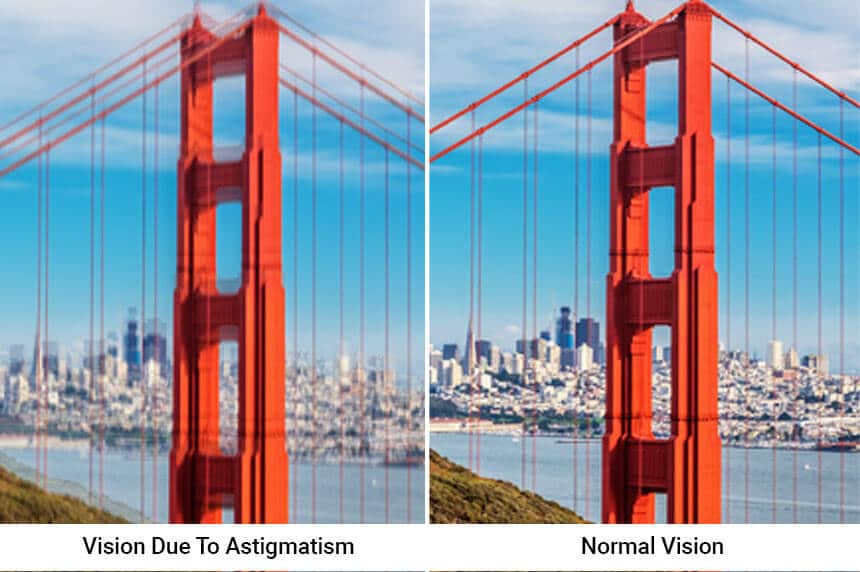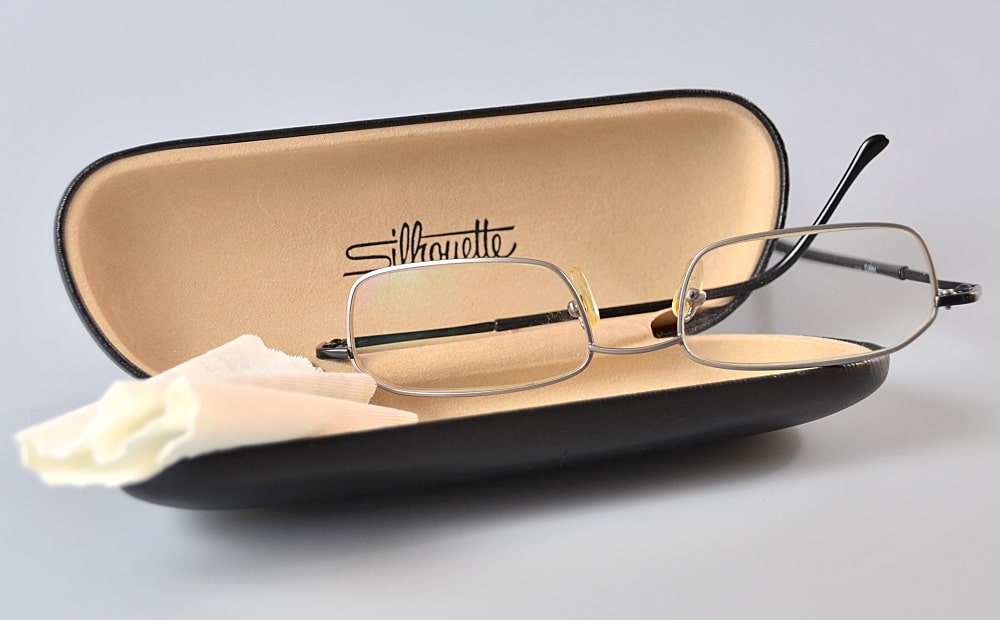What is Astigmatism?
Astigmatism is a common vision condition that causes blurred vision. It occurs when the cornea (the clear front cover of the eye) is irregularly shaped or sometimes because of the curvature of the lens inside the eye. ... Most people have some degree of astigmatism.
Astigmatism is a refractive error, like farsightedness and nearsightedness, meaning it is not an eye disease; it's just a problem with how the eye focuses light.
In an eye with astigmatism, light fails to come to a single focus on the retina to produce clear vision. Instead, multiple focus points occur, either in front of the retina or behind it (or both).
Astigmatism Symptoms
Astigmatism usually causes blurred or distorted vision to a certain degree at all distances.
Symptoms of uncorrected astigmatism are eye strain and headaches, especially after reading or other prolonged visual tasks.
Squinting also is also a very common telltale sign that one has developed astigmatism.
What Causes Astigmatism?
Astigmatism is caused by an irregularly shaped cornea. Instead of the cornea having a symmetrically round shape (like a baseball), it is shaped more like an American football, with one meridian being more curved than the meridian perpendicular to it.
The steepest and flattest meridians of an eye with astigmatism are called the principal meridians.
In some cases, astigmatism is caused by the shape of the lens inside the eye. This is called lenticular astigmatism, to differentiate it from the more common corneal astigmatism.
Types of Astigmatism
There are three primary types of astigmatism:
- Myopic astigmatism. One or both principal meridians of the eye are nearsighted. (If both meridians are nearsighted, they are myopic in differing degree.)
- Hyperopic astigmatism. One or both principal meridians are farsighted. (If both are farsighted, they are hyperopic in differing degree.)
- Mixed astigmatism. One principal meridian is nearsighted, and the other is farsighted.
Astigmatism can also be known and classified as regular or irregular. In regular astigmatism, the principal meridians are 90 degrees apart (perpendicular to each other). In irregular astigmatism, the principal meridians are not perpendicular. Most astigmatism is regular corneal astigmatism, which gives the front surface of the eye an oval shape.
Irregular astigmatism can result from an eye injury that has caused scarring on the cornea, from certain types of eye surgery or from keratoconus, a disease that causes a gradual thinning of the cornea.
Astigmatism Correction Options
Astigmatism, like nearsightedness and farsightedness, usually can be corrected with eyeglasses, contact lenses or refractive surgery.
If you have questions, you can talk to our team for recommendations. We sell the best lenses and coatings in our Maple Location. To book an appointment for an eye exam to see an optometrist, call us at 905-832-6262.
Our Maple optometrist Location: Eyes on Eyes Optical
9929 Keele St, Unit 110, Maple, ON L6A 1Y5, Tel: 905-832-6262
IMPORTANT CARE AND CLEANING TIPS FOR EYEGLASSES
Glasses can accumulate dirt, smudges and dust throughout the day. Regardless of how often you use your glasses, is important be proactive in order to keep them clean and to protect the lenses.
How to Clean Your Glasses
Before you start handling and cleaning your glasses, make sure to properly clean your hands in order to get rid of dirt, grime, and oils. Next, you must rinse the lenses with lukewarm water. Remember to not use hot water or any chemicals as this will cause the coatings of the lenses to dissipate over time. The safest solution to clean your lenses with is the spray cleaner that came with your glasses. You can also use a drop of liquid dish soap on your fingers to gently rub away the buildup on your lenses. Ensure you also wash the nose pads and frames with your solution aside from the lenses. Lastly to finish, give the glasses a final rinse in lukewarm water and thoroughly dry them with a lint-free cloth. During the day, make sure you carry a lint free cloth in your eye glasses case in order to touch up your glasses and maintain their cleanliness throughout the day so that you can consistently see clearly.
While cleaning your eye glasses is an easy task, there are a few common mistakes that you should avoid doing while cleaning your glasses.
Here are a few things that you should avoid:
It might seem more convenient to clean your lenses with the hem of your shirt as needed, but clothing can damage your eye glasses. The small pieces of dust or dirt on your shirt can scratch the lenses. Also, avoid using paper products such as napkins, paper towels or tissues as they carry dust.
Never use harsh cleaning products to clean your lenses as they could deteriorate or damage the coating on the lenses. For example, avoid using products such as ammonia based cleaners, window cleaner, bleach or vinegar. Lastly, if the water you are using to clean your lenses is too hot, it can damage certain types of coatings that have been applied to the lenses.
If you have questions about caring for your lenses and frames, then you can talk to our team for recommendations. To book an appointment for an eye exam to see an optometrist, please call us at 905-832-6262
Maple optometrist Location: 9929 Keele St, Unit 110, Maple, ON L6A 1Y5
What is an eyeglass prescription?
An eyeglass prescription is a prescription written by a vision professional and authorizes a licensed optician to provide eyeglasses to you. An eyeglass prescription can be issued only by an optometrist or a physician, who may be an ophthalmologist. In Ontario, only optometrists, physicians and opticians are authorized to sell prescription eyeglasses. If the eye exam indicates that corrective lenses are necessary, the prescriber generally writes a prescription for an optical device. The parameters indicated on the prescription include the dioptric power of each lens to be made in order to correct the visual blur.
The prescription you are provided with by the optometrist is based on the information retrieved from your eye examination. In order to accurately determine how your vision can be corrected, the optometrist will consider:
- your overall health history, family history and your day to day visual demands
- how your eyes work together
- the general health of your eyes
- the lenses required for you to achieve the best vision and focus
Prescriptions given after an eye examination may vary from time to time depending on the measurements taken by the optometrist. Minor variations in the prescription are normal and may not affect the way you see.






